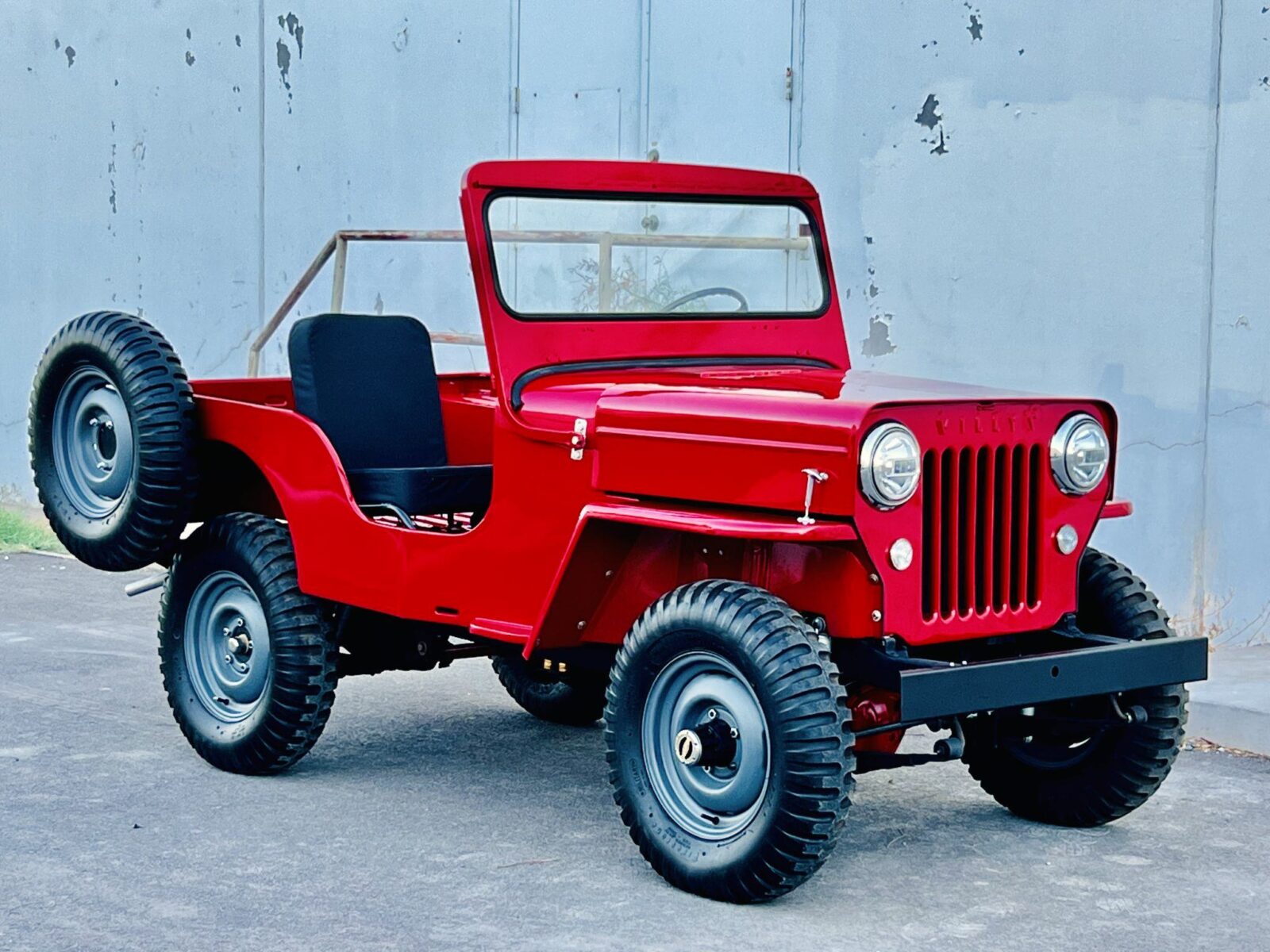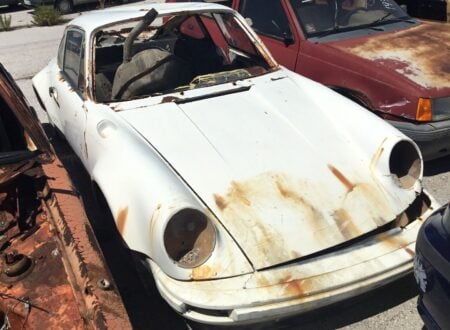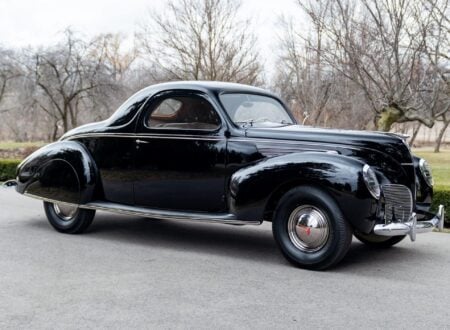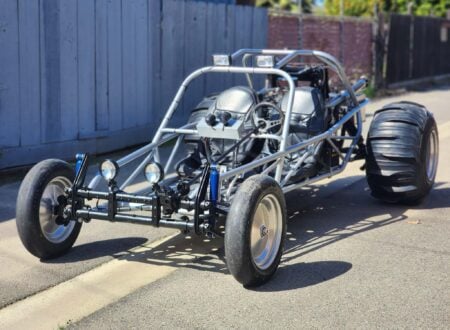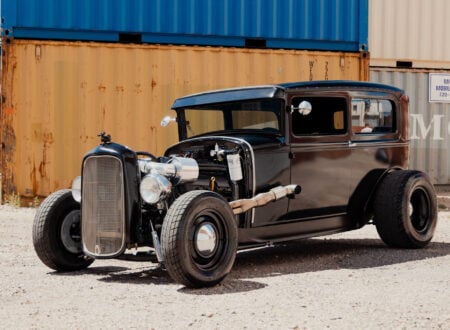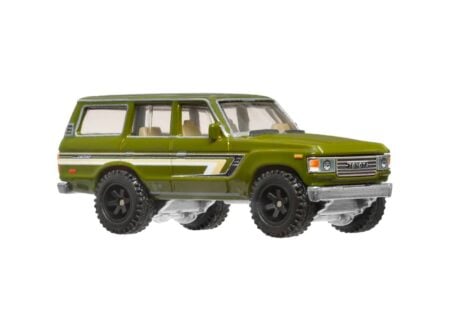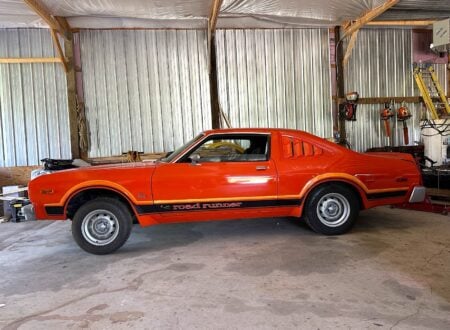This is a restored Jeep CJ-3B with an all-new steel body tub and a rebuilt engine and drivetrain – plus a slew of other new and refurbished parts.
The CJ-3B was based on the design of the WWII-era Willys Jeep, but has a series of upgrades to make it more civilian-friendly – “CJ” stood for “Civilian Jeep” after all. The CJ series Jeeps are the ancestors of all modern Jeeps, but they’re most closely related to the current Wrangler models.
Fast Facts: The Jeep CJ-3B
- The Jeep CJ-3B represented Willys’ practical response to accommodating the taller F-head “Hurricane” engine, introduced in 1950 for better breathing and power over the earlier L-head Go-Devil. Launched in 1953, it kept the CJ-3A’s 80 inch wheelbase and rugged simplicity but gained a higher hood and cowl, giving it its distinctive front profile.
- Built on a steel ladder-frame chassis with a Spicer 18 transfer case and Dana 25/44 axles, the CJ-3B used a T-90A three-speed manual and the 134 cubic inch F-head four-cylinder producing 75 bhp and 114 lb ft of torque. It kept the leaf-spring suspension, simple steering, and drum brakes, making it a slow but extremely reliable workhorse for farmers and industrial users.
- Global production extended the CJ-3B’s life far beyond its U.S. run, with licensed builds by Mitsubishi in Japan, Mahindra in India, and others across South America. Approximately 155,000 were produced domestically from 1953 to 1968, and its basic design served as the foundation for the CJ-5 and CJ-6 models that followed.
- The restored 1954 Willys CJ-3B shown here received a new steel body tub, rebuilt drivetrain, and refinished red paintwork between 2020 and 2025. Mechanical updates include a 2022 engine rebuild, suspension and steering work in 2025, fresh brakes, and new Firestone Military tires on powdercoated 16-inch wheels.
History Speedrun: The Jeep CJ-3B
By the early 1950s Willys-Overland had a problem – the company’s postwar CJ-2A and CJ-3A had carried the wartime Jeep design into civilian life, but their low hoods couldn’t accommodate Willys’ new F-head “Hurricane” engine. That powerplant, introduced in 1950, offered better breathing and more power than the aging L-head Go-Devil, but its taller cylinder head demanded more space. Rather than redesign the drivetrain, Willys simply raised the hood and cowl. The result was the CJ-3B – a simple 4×4 workhorse that became one of the most enduring shapes in Jeep history.
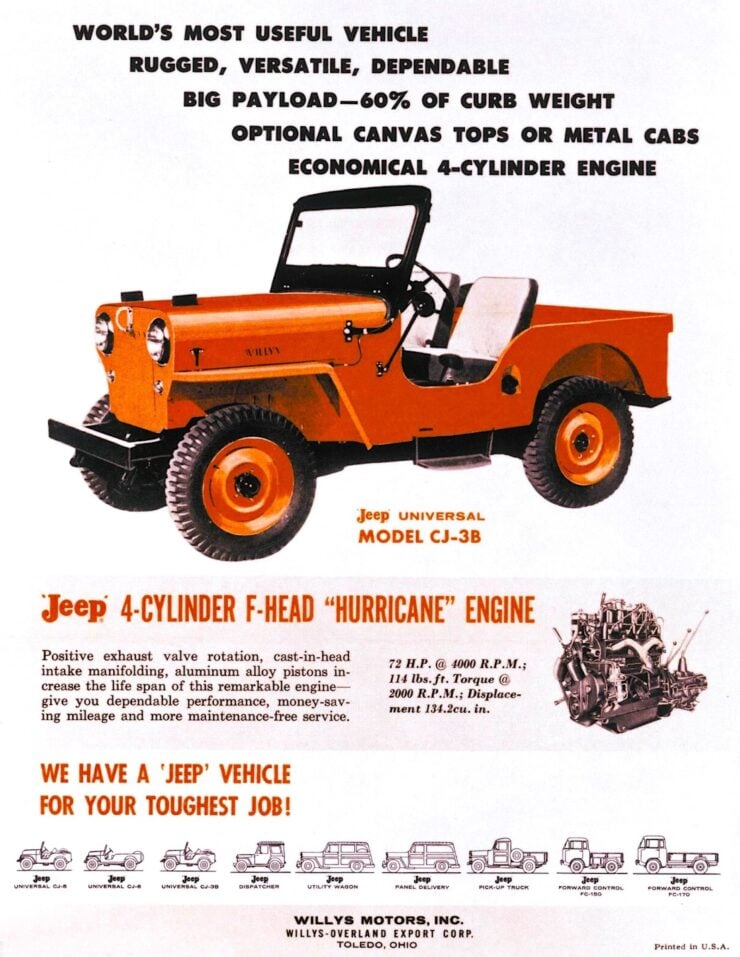

The CJ-3B made its formal debut for the 1953 model year, coinciding with Kaiser’s acquisition of Willys-Overland. At first glance, it looked like a CJ-3A with an oversized forehead – an aesthetic look that divided buyers but served a purpose. Under that taller hood sat the aforementioned 134 cubic inch F-head Hurricane four-banger producing 75 bhp and 114 lb ft of torque, up from the 60 bhp of its flathead predecessor.
The Hurricane used an inlet-over-exhaust configuration, an inexpensive half-measure that squeezed more power from the same block as the L-head Go-Devil while keeping much of its simplicity.
The CJ-3B used the same basic steel ladder-frame chassis and 80 inch wheelbase as the CJ-3A, with a Spicer 18 dual-range transfer case and Dana 25 front and Dana 44 rear axles. The standard transmission was the T-90A three-speed manual.
It kept leaf springs at all four corners as you would expect for the era, with unassisted steering, and four-wheel drum brakes. Top speed hovered around 55 mph, but these Jeeps were never about highway travel. They were sold to farmers, miners, surveyors, and small contractors – people who valued reliability and off-road ability over any serious attempts at refinement.
Production of the CJ-3B began at the Toledo, Ohio plant and spread internationally under license. Mitsubishi built CJ-3Bs in Japan as the J3, Mahindra built them in India well into the 1970s, and several South American countries assembled their own local variants. This global reach helped the CJ-3B outlive its intended production window by decades rather than just years. In total, somewhere around 155,000 CJ-3Bs were built in the US between 1953 and 1968, though overseas production continued far longer.
The CJ-3B was an evolutionary midpoint in Jeep’s civilian lineage in a way — bridging the agricultural and industrial practicality of the CJ-2A and CJ-3A with the more versatile and civilian-friendly CJ-5 introduced in 1955. It was the last of the flat-fender Jeeps, though technically “semi-flat,” with its squared fenders and higher hood.
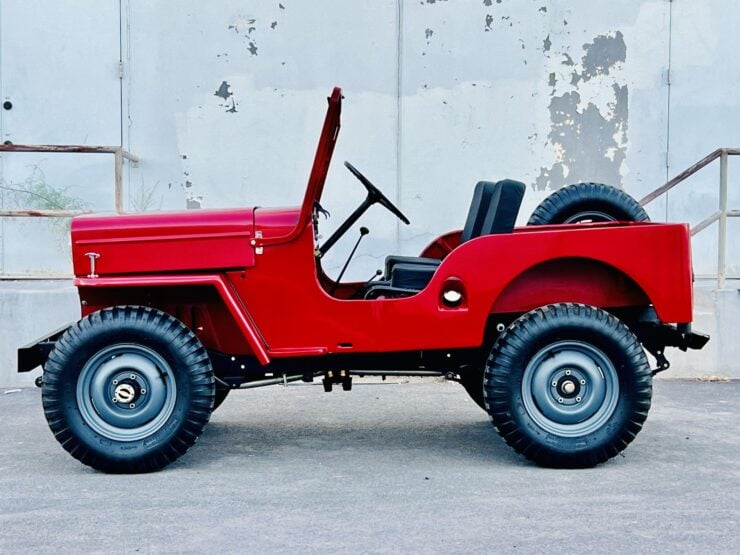

Later models picked up some minor refinements like side steps, larger windshield frames, and optional metal half-cabs or canvas tops. Despite these small updates, the CJ-3B always remained visually (and mechanically) anchored in its 1940s wartime roots.
Collectors today appreciate the CJ-3B for its transitional design – it combines the simplicity of the original Willys with the improved performance of the Hurricane engine. The parts interchangeability among early Jeeps – from axles to transmissions – also makes it one of the easier classics to restore or maintain.
In the larger global picture, the CJ-3B was a survivor. It served as the backbone for countless licensed Jeeps across continents, trained generations of mechanics, and paved the way for the CJ-5 and CJ-6 that followed. Seven decades later, it remains a direct link to the postwar years when pure utility and capability defined what a Jeep was.
The 1954 Willys CJ-3B Shown Here
This 1954 Willys CJ-3B has spent most of its life in Colorado and Arizona and underwent a multi-year restoration between 2020 and 2025. It’s finished in bright red over a black canvas interior and powered by a rebuilt 134 cubic inch “Hurricane” F-head four-cylinder engine paired with a three-speed manual transmission and dual-range transfer case.
The steel body tub was replaced during the restoration and refinished in red, complemented by a body-color grille, folding windshield, aftermarket headlights, black bumpers, and a drop-down tailgate. It rides on gray-painted 16 inch steel wheels fitted with Firestone Military tires sized 7.00-16, with a matching side-mounted spare. The wheels were powdercoated and tires replaced in 2023, while the brakes were redone in 2022 and the front suspension rebuilt in August of 2025.
Inside, the cabin has been retrimmed with new black canvas upholstery over replacement seat frames. The painted metal dash houses replacement gauges, including a 60-mph speedometer and readouts for fuel, oil pressure, temperature, and amperage.
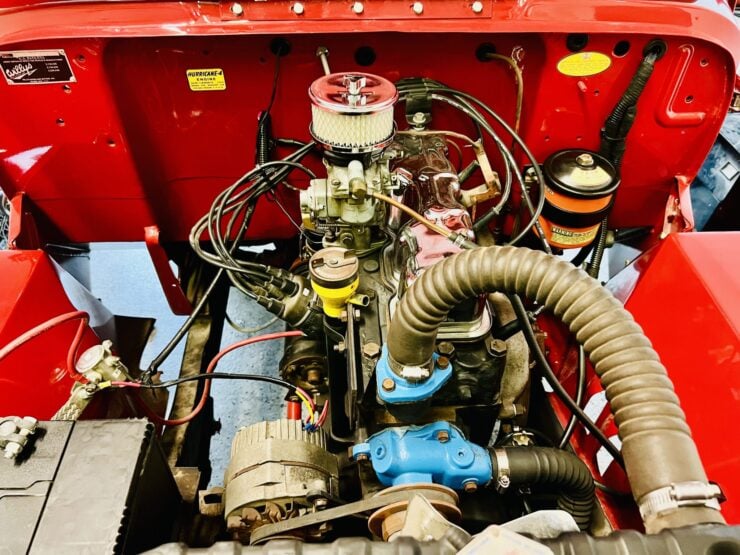

The odometer shows fewer than 10 miles, though the seller notes the reading isn’t accurate. The steering wheel and column were replaced in 2025, and it has lap belts and rubber floor mats. Mechanical work includes a 2022 engine rebuild along with new fuel lines and a new fuel tank. An alternator and open-element air cleaner have been fitted, and the exhaust system and muffler were replaced in 2025.
This CJ-3B is now being offered for sale out of Phoenix, Arizona on Bring a Trailer with refurbishment records, a service manual, and an Arizona title in the seller’s name. If you’d like to read more about it or place a bid you can visit the listing here.
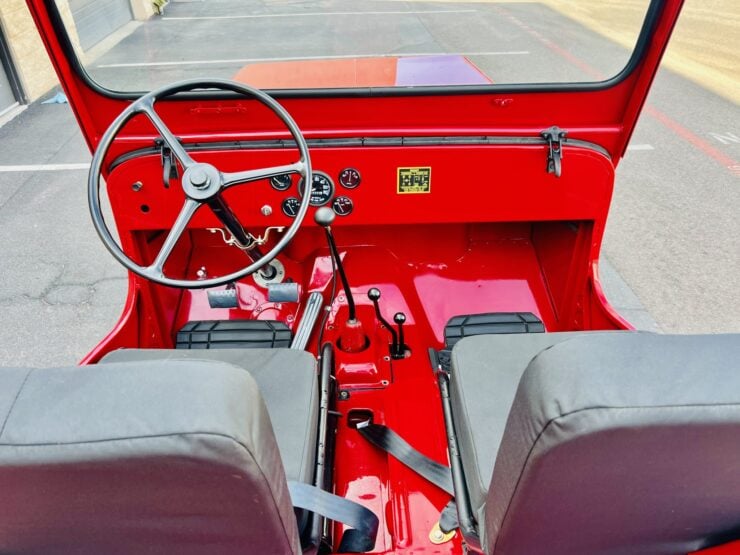
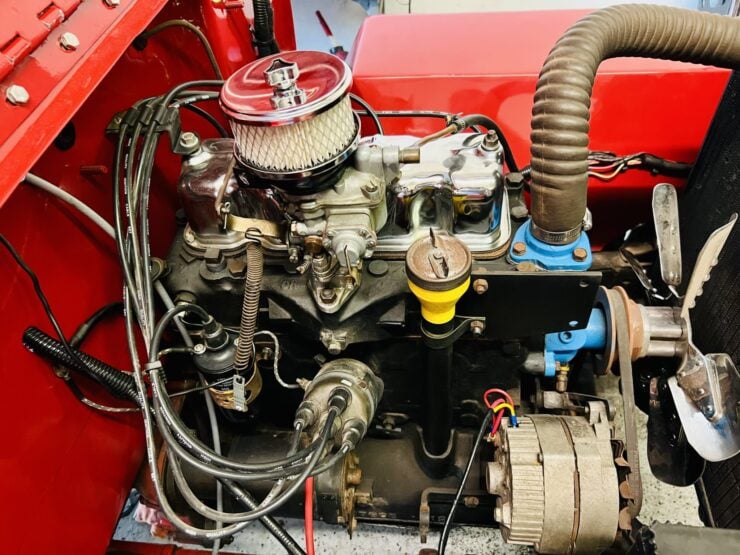
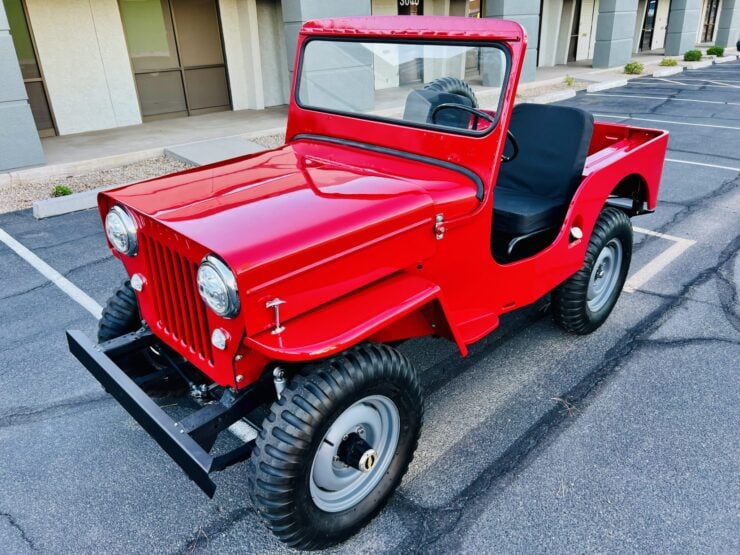
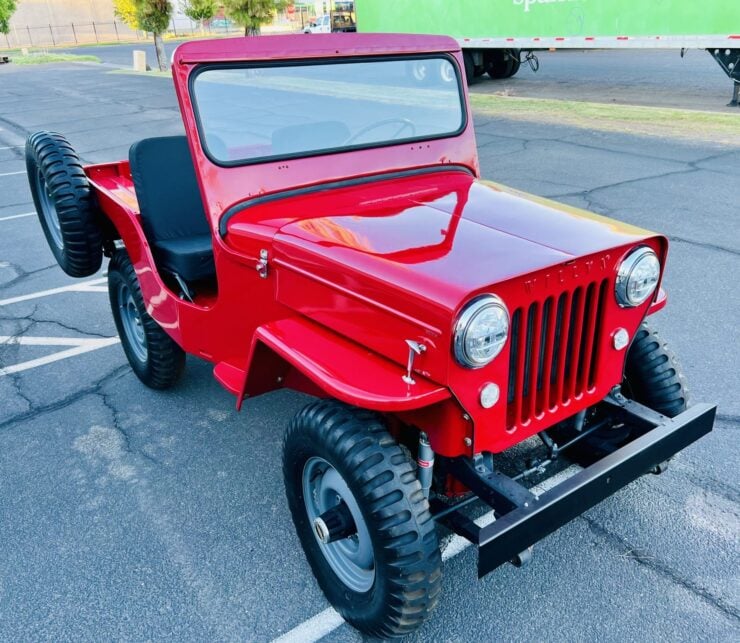
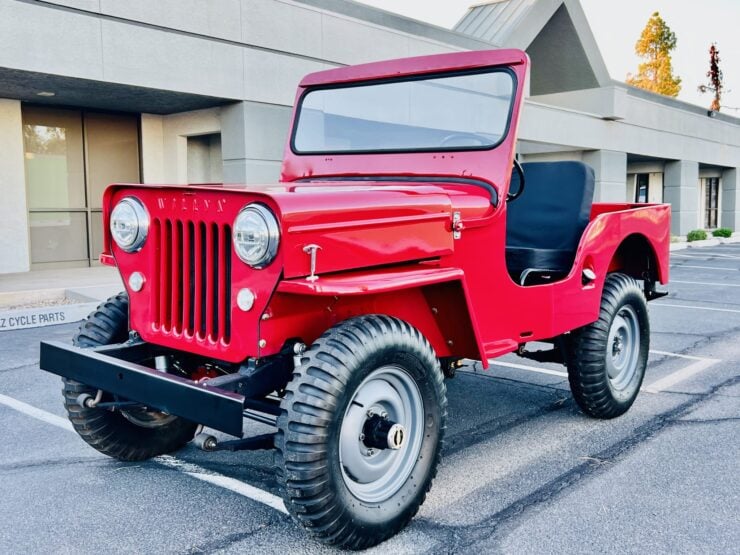
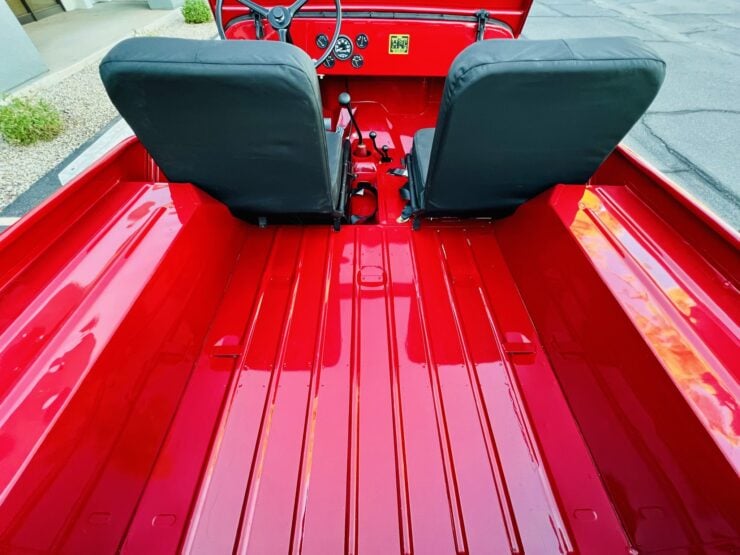
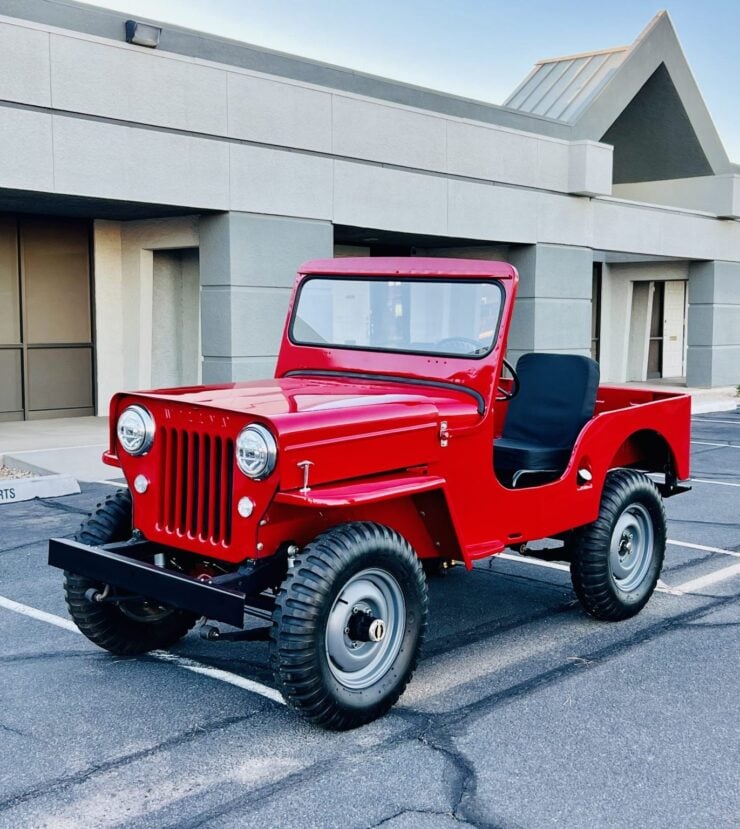
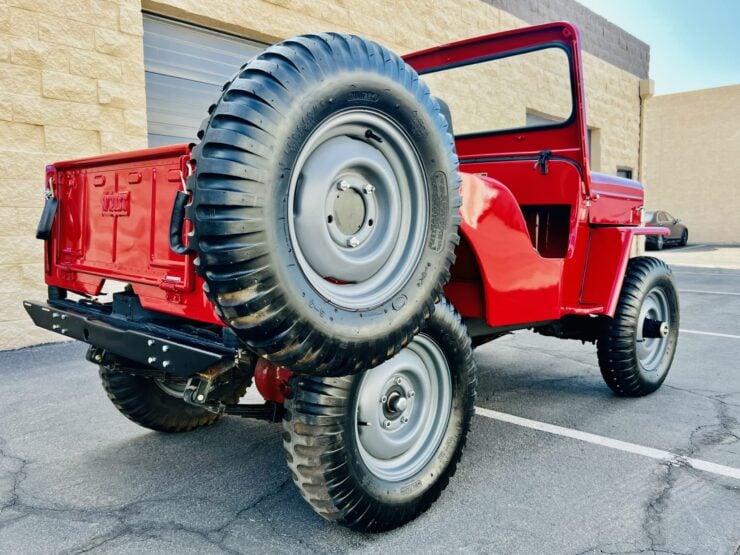
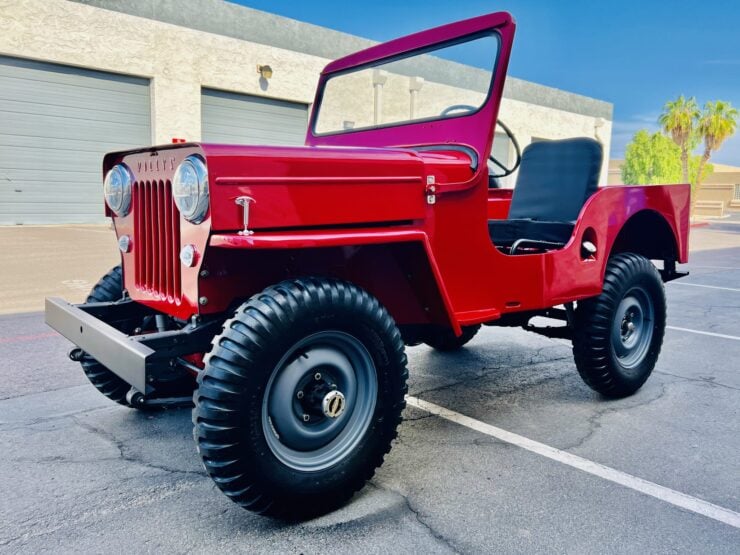
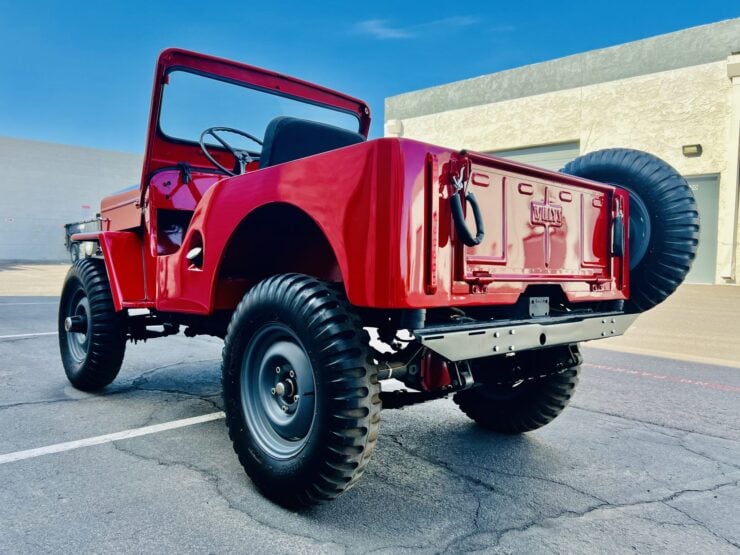
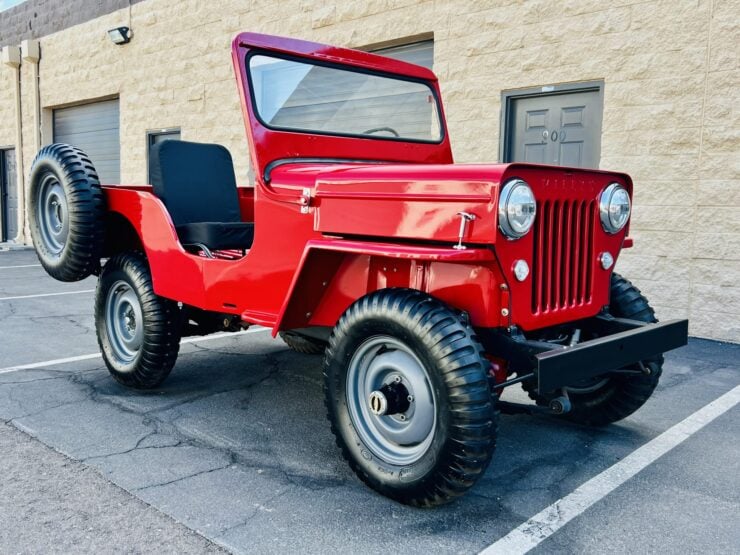
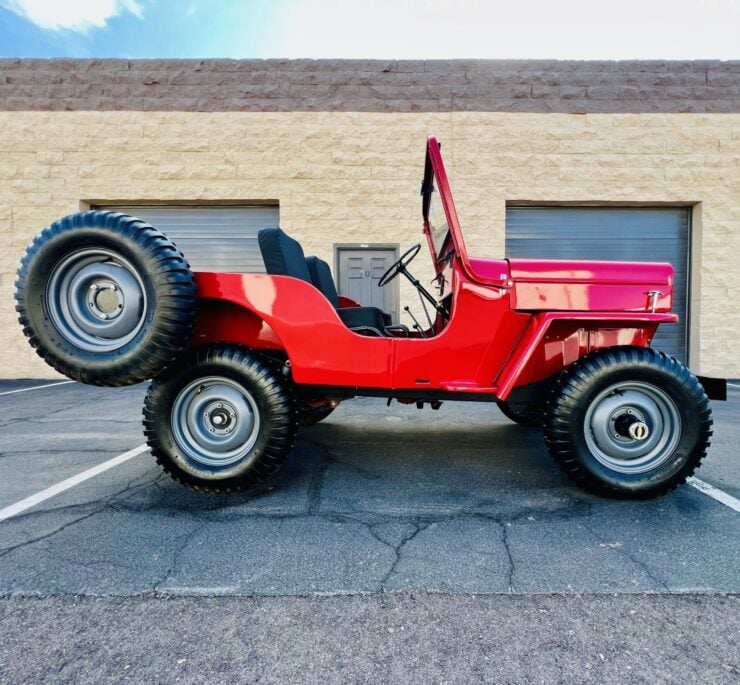
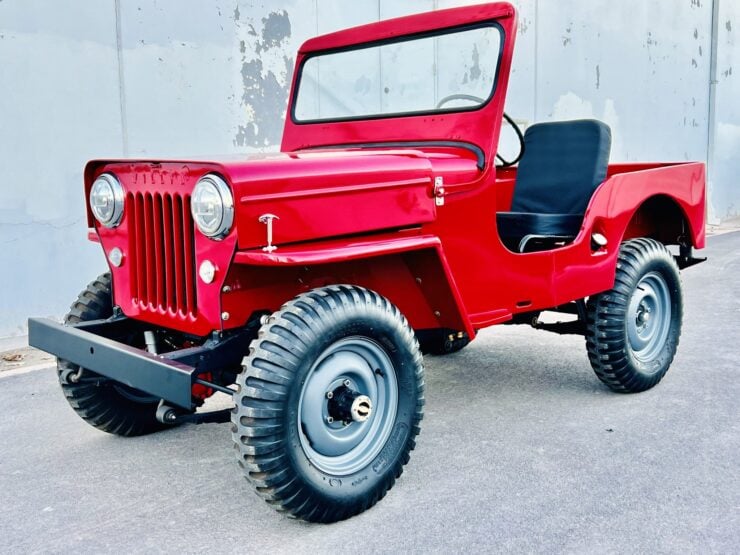
Images courtesy of Bring a Trailer

